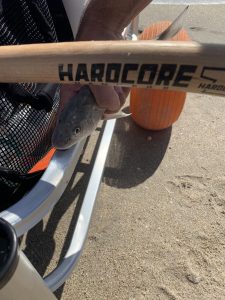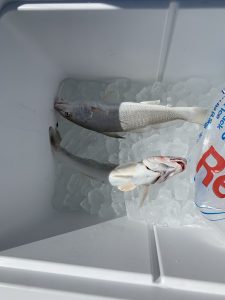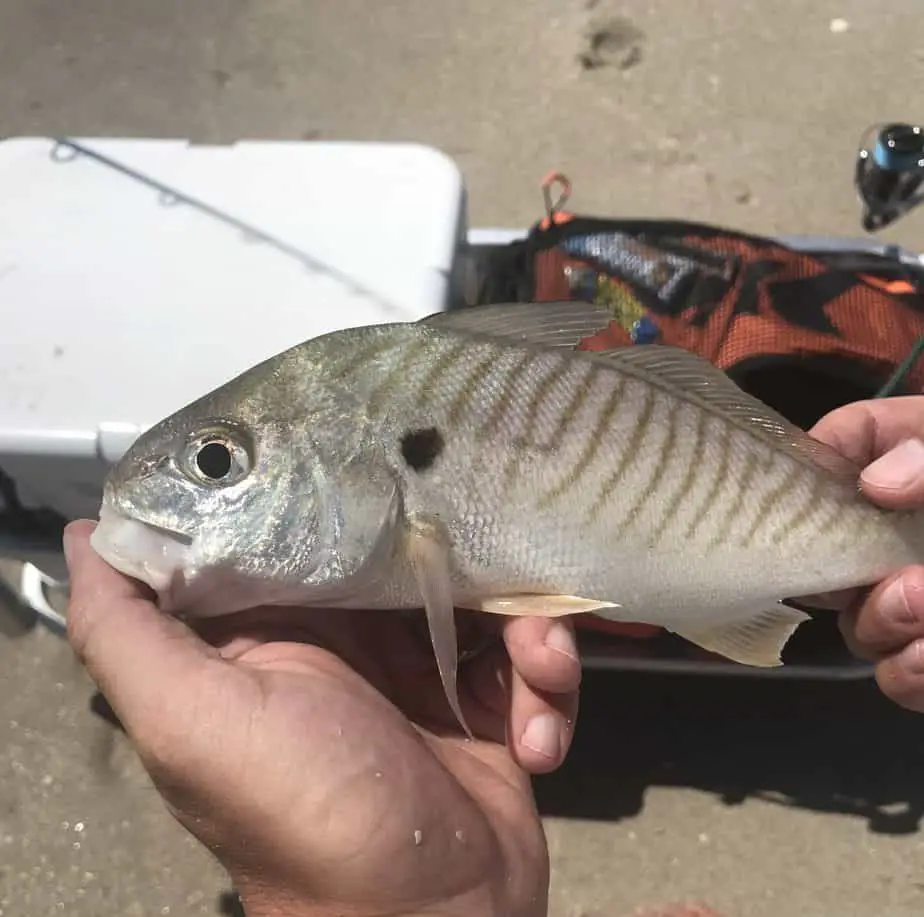For optimum taste, you should first kill and bleed the fish, then immediately store in a saltwater ice brine. If you don't have ice, your best bet is keeping the fish alive. Read below for more options and methods.
Keeping Fish Alive in Live Well
Some fisherman prefer not to fool around with preparing the fish while they're in the middle of fishing. If you have a DIY saltwater live well that's big enough for your catch, you can minimize the stress a fish undergoes by removing the hook and keeping it alive in the live well. A live well is preferred over a bucket of water because the aeration keeps oxygen levels up. This method is best if used temporarily because it is actually quite difficult to maintain similar oxygen levels and water temperature as the conditions in which the fish was caught. Failure to maintain the right temperature and oxygen can result in a slow death for the fish, which is exactly what we are trying to avoid. We recommend doing this temporarily while the fish are biting and you want to get your line back in the water as soon as possible.
Methods of Killing your Fish
I've done quite a bit of research on the topic and it seems this question most often comes up in 2 contexts: the most humane way of killing a fish, and how to kill your fish for the best taste. It's interesting to me that the answer is the same for both contexts. To find the most humane way, you're going to be looking for the way that inflicts the least amount of pain and suffering on the fish. To find the method that supports the best taste, you're also going to look for the way that inflicts the least amount of stress and pain on a fish because the stress and pain cause a release of cortisol and lactic acid, which changes the flavor of the meat. This is why the top two methods involve immediately stopping brain activity.
Other methods used include putting the fish immediately on ice, and beheading the fish. A fish put on ice alive will die a slow and stressful death, which will absolutely have a negative effect on the taste. Beheading the fish has multiple cons, including being illegal in some states for some species. For example, check out the landed in whole condition Florida Rule 68B-35.003 for pompano and permit:
“All pompano, African pompano, and permit shall be landed in whole condition. The possession, within or without state waters, on any public or private fishing pier, or on a bridge or catwalk attached to a bridge from which fishing is allowed, or on any jetty, of any such fish that have been deheaded, sliced, divided, filleted, ground, skinned, scaled, or deboned is prohibited. Mere evisceration or “gutting” of such fish, or mere removal of gills, before landing is not prohibited”
Ike Jima Method
Ike Jima is a centuries old Japanese technique that was created to improve the taste and texture of fish caught for sushi. The method involves striking the brain of the fish with a spike, similar to an ice pick, and then inserting a wire from the brain stem all the way down to the end of the spinal cord to destroy the nervous system. This is a quick process, and is highly effective at minimizing the spread of cortisol and lactic acid. Stopping the spread of these hormones will eliminate a fishy taste and mushy filet. Here's a helpful YouTube video on the topic.
After the spike and wire, you'll need to bleed the fish by using a fillet knife to cut the fish at the bottom of the gills. Do this on both sides of the fish. Some fishermen will recommend at this point to the fish to a stringer, put it back in the ocean, and let it bleed out. Be aware that this is illegal in the state of Florida because it is classified as “chumming”, reference Florida Rule 68B-2.011 Chumming. You're better off bleeding it out into a 5 gallon bucket and burying the blood.
Fishing Priest Method
If you read through internet fishing forums, you may hear of fisherman “bashing the fish in the head” with some kind of small bat. These are actually called “fishing priest” and are typically weighted at the end with metal or a higher concentration of wood. To kill the fish with a fishing priest, you wack it right between and slightly behind the eyes to crush the skull. This will immediately stop brain activity. To ensure the fish is dead and minimize the internal travel of stress signals, you'll need to bleed the fish by slicing inside the gill and putting the fish head down in a bucket for the blood to drain out. Keep a little ice in the bottom of the bucket to make sure you don't inadvertently soak the fish in blood. Once the fish bleeds out, you can move on to icing the fish.

If you're struggling to choose between the fishing priest method and the Ike Jima method, consider how soon you'll eat the fish. If you'll eat it within a day, the fishing priest method will suffice. If you're waiting 3-4 days to eat it, take the extra time to do Ike Jima and you won't regret it.
Properly “Icing” Your Fish
There is a lot of conflicting information out there about how to properly ice your fish. I've read through tons of articles and there are two ways to do this that are most effective, and both work best if you kill the fish first:
Saltwater ice brine
To do this, you bring your cooler full of ice (regular bagged ice from any gas station or grocery store) to the beach. Then you take a bucket and fill it with the saltwater from the ocean and pour it over the ice. This will create a “slush” that fisherman call a saltwater ice brine. It's extremely effective because the salt allows the water temperature to fall below 32 degrees F (freezing point of water) and remain in a liquid form. There is nothing better for maximizing contact with a fish than a liquid. Doing this method is effectively brining your fish, which draws out the moisture, and results in nice, firm meat. While surf fishing, the salt water is so easy to come by, that it just makes so much sense to do this.
Crushed ice, lots of it, with the melted ice draining out of the cooler
To do this one effectively, you can buy crushed ice because it has a better chance of evenly spreading the cold temperature across the fish's skin when compared to cubed ice. If you're out on the beach all day, you'll need to also keep an eye on how much the ice is melting so that you don't end up keeping the saltwater fish in an ice/freshwater mixture. The ice/freshwater water mixture will be absorbed by the fish and causes a mushy texture in the flesh. To help avoid this, you can keep a false bottom in your cooler which will keep the water separated from the ice, and also keep your cooler's drain plug open. That will allow the water to drain out as it accumulates.

Hopefully this article helps you avoid mushy fish filets and “fishy” tasting fish! And if you're having trouble catching fish, read our article on How to Improve Your Fishing Skills.
Tight lines and high tides, y'all!
As an Amazon Associate I earn from qualifying purchases.
Recent Posts
Fat Cow Jig Strips: The Ultimate Bucktail Jig Upgrade for Surf Fishing
As discussed in my previous article, "Surf Fishing with Bucktail Jigs: Ultimate Guide for Beach Anglers," bucktail jigs are a staple in any surf angler's tackle box, offering a versatile way to catch...
In my previous article, "Surf Fishing with Bucktail Jigs: Ultimate Guide for Beach Anglers," I introduced you to the bucktail jig and discussed how versatile of a lure it is for catching a wide range...

